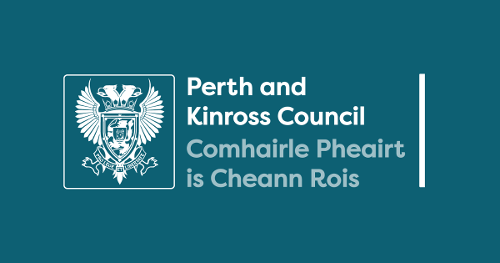People and Culture Strategy 2024 to 2028
People and Culture Strategy: Our operating context
Perth and Kinross Council is situated in a central location in Scotland. It is the fifth largest local authority area in Scotland, but the 8th least densely populated covering a geographical area of around 5,286 km² with a mix of urban and rural communities, and an estimated population of 150,800 (Scotland's Census 2022).
We provide services to individuals, households, communities and special interest groups. From education to supporting our tenants and community councils; from managing our roads and household waste services to planning for the future, we deliver the services and infrastructure needed to make Perth and Kinross a great place to live, work and visit. As part of the Perth and Kinross Health and Social Care Partnership we also work with our NHS partners to deliver services with and in our communities in new ways to ensure that people will receive the seamless support they need to live active, healthy and independent lives in their own homes for as long as possible. To deliver such a diverse range of support and ensure that we direct this to the areas of greatest need requires effective management of a skilled and knowledgeable workforce.
The profile of the communities we serve is changing. Scotland's Census 2022 results show an increase in our population of 4,100 since the previous Census in 2011 (2.8% compared to Scotland increase of 2.7%) but between 2001 and 2021, there has been a 14% increase, the 7th highest percentage change out of the 32 council areas in Scotland and significantly higher than the 8.2% increase in Scotland's population over the same period.

Source: Scotland's Census 2022 - Rounded population estimates | Scotland's Census (scotlandscensus.gov.uk)
The 2022 Census results also show that 37,000 people (24.7%) are aged 65 and over compared to 20.1% in Scotland; an increase of 22% since the 2011 Census. This highlights the ongoing requirement for the services provided by the Perth and Kinross Health and Social Care Partnership and the importance of working with commissioned service organisations and our communities to meet this need. The model of delivery will continue to change with the planned introduction of a National Care Service, and we will adapt our approach in line with this.
The age profile of our community also poses challenges to our arrangements for caring for and educating our children and young people. Scotland's Census 2022 indicated that there has been a reduction in our 0 to 14 years population - 14.7% compared to 15.9% in 2011 and 15.3% in Scotland overall. We continue to consider and adapt to these changes, again requiring flexibility and in-demand skill sets from our workforce who deliver social work and care, early learning and childcare and teaching directly to children, young people and their families but also to those who plan and manage the provision of nurseries, schools and other infrastructure requirements.
Nearly 6,000 children in Perth and Kinross are living in poverty (Local Child Poverty Action Report 2022 to 2023 (PDF, 836 KB)). The causes and impacts of child poverty are complex. There is no single solution to poverty as each household's circumstances will differ, the Council has identified this as a key priority and, with partners, will lead action to prevent and mitigate the impacts of poverty for children living in Perth and Kinross.
The purpose of our workforce is to provide public services and serve all our communities across Perth and Kinross, understanding what is important to them now and in the future. Our people need to be flexible, compassionate and apply a can-do attitude. They also need to have confidence, demonstrating our values and behaviours and the skills to challenge and redesign existing processes to adapt to the changing needs of those we serve. This is fundamental to effective service delivery of our outcomes and objectives.
As one of the largest employers in the area, we demonstrate the importance of inclusion by being a role model for initiatives such as Living Wage, Carer Positive, Disability Confident, Young Person's Guarantee and the Armed Forces Covenant. These reflect the commitment that we make as an employer to support the different groups within our workforce and our communities. Our employees work to continually develop and improve the services we provide with inclusion at the heart of our strategies and plans, such as the Joint Carers Strategy, Accessibility Strategy (PDF, 1 MB), and Corporate Parenting Plan (PDF, 760 KB), and by targeting specific roles in this area for example in our Employability, Equalities, Social Care and Communities teams.
We work with local partners to promote opportunities for employment for those we serve, for example, providing all our vacancy details to the DWP Job Centre to promote employment, and working with Perth Autism Support to refresh our policies and practice and develop toolkits to ensure that neurodiverse job applicants and colleagues are supported in accessing opportunities. Our Modern Apprentice programme recruitment includes a guaranteed interview for applicants who are care-experienced.
Our approach to inclusion is a key aspect of our Fair Work agenda in which we work in partnership with our trade unions to deliver Opportunities, Effective Voice, Fulfilment, Security and Respect to our employees as part of our day-to-day activity.




